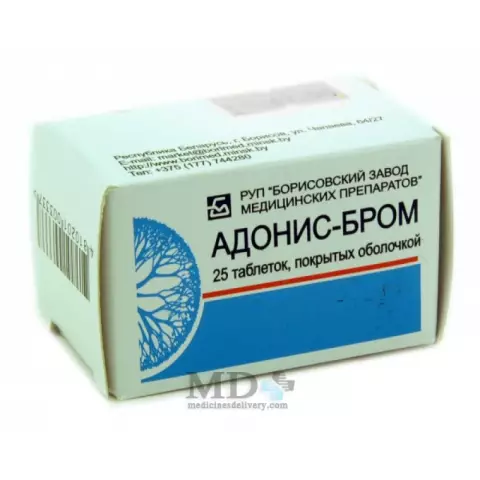- Author Rachel Wainwright [email protected].
- Public 2023-12-15 07:39.
- Last modified 2025-11-02 20:14.
Cuff
Instructions for use:
- 1. Description of an ordinary
- 2. Application history
- 3. The chemical composition of the common
- 4. Application in traditional medicine
- 5. Contraindications
Prices in online pharmacies:
from 49 rubles.
Buy

Common cuff is a herb that belongs to the Rosaceae family.
Description of the cuff ordinary
This creeping perennial plant can reach a height of 40 cm, the upper leaves are practically without petioles, the lower leaves are on long petioles. The cuff leaves have an original shape, therefore they are used as the basis for decorative elements. For example, when designing the waiting room of the Kursk railway station in Moscow, the configuration of the cuff sheet was used.
The flowers at the cuff are unremarkable, yellow-green in color, small in size, collected in umbrellas.
You can meet the plant throughout Europe, with the exception of the southern regions. It grows in Ukraine, the European part of Russia and the North Caucasus. Prefers forest edges, mixed and pine forests, roadsides and arable lands.
Cuff history
Since ancient times, the plant has been classified as a magical plant due to its unique feature - dew collects on its leaves even on warm nights. Scientists believe that the plant is capable of producing water on its own. According to some reviews of the cuff, in ancient times, alchemists used these droplets to obtain a philosopher's stone. And young girls used the dew as a love potion.
An ordinary cuff decoction was used to obtain green, yellow and black paint.
The cuff has also found its application in cooking. Mainly used are young shoots and cuff leaves. Salads and soups are prepared from them, sometimes they are ground, and used as a seasoning. The leaves are marinated with vegetables.
The cuff has not found its use in official medicine, but in folk medicine it is used very widely. In May-July, herbalists collect the leaves of the plant, in September - the roots.
The chemical composition of the common cuff
The stems and leaves of the cuff contain catechins, tannins, lipids, flavonoids, phenolcarboxylic acid derivatives.
The leaves contain a lot of vitamin C and trace elements such as zinc, iron, manganese, boron.
The use of the cuff in traditional medicine
Due to its beneficial properties, the cuff is used as a medicinal plant in many countries.
In Denmark, the plant is used to fight ulcers and heal wounds, in Norway - externally and internally against herpes, in Italy - as a diuretic, against diarrhea and dropsy.
For insomnia and colds, the healing properties of the cuff also help.
A decoction of the plant is used externally for boils, ulcers, burns, acne. In the form of douching, it is used for leucorrhoea. For diseases of the pelvic organs, baths are taken with a decoction of the plant. Baths with an ordinary cuff are also made for small children to strengthen their muscles.
Fresh leaves of the plant are applied for rheumatism, burns, panaritium.
Since ancient times, the plant has been used to treat bleeding and wounds, external and internal, with chronic and acute inflammation, with tumors and ergotism. Positive reviews about the cuff indicate that it is an excellent way to cleanse the blood and lower cholesterol. It is also used for bronchial asthma, for the treatment of allergies, boils and acne.
Women, judging by the reviews about the cuff, consider it a wonderful remedy for many female ailments and diseases. It is used for pain in the lower abdomen, leucorrhoea, inflammation, infertility, menorrhagia, for dysfunctional uterine bleeding, for menstrual irregularities.

When a miscarriage is threatened, the properties of the cuff help maintain pregnancy and prepare for childbirth. If you take a decoction of the plant inside, starting from the third month of pregnancy and before childbirth, the likelihood of premature birth is significantly reduced, there are no problems with placenta discharge, and childbirth will be easy.
The remarkable hemostatic property of the cuff in the old days saved the lives of many women. After childbirth, a decoction of the plant helps to stop blood and establish lactation.
The cuff is used in folk medicine and for cellulite, obesity, combining a decoction from the plant with a health-improving diet and physical activity.
Due to the fact that the plant is able to lower blood cholesterol levels, it is used to treat atherosclerosis and stroke.
Contraindications
No negative reviews about the cuff and no contraindications to it have been identified. In case of overdose, diarrhea may occur. In this case, it should be discontinued.
Cuff: prices in online pharmacies
|
Drug name Price Pharmacy |
|
Ordinary cuff Lekra-SET medicinal collection 50 g 1 pc. RUB 49 Buy |
Information about the drug is generalized, provided for informational purposes only and does not replace the official instructions. Self-medication is hazardous to health!






